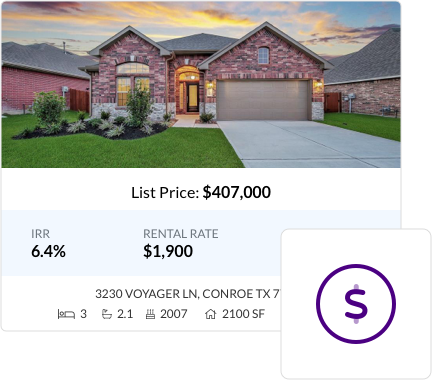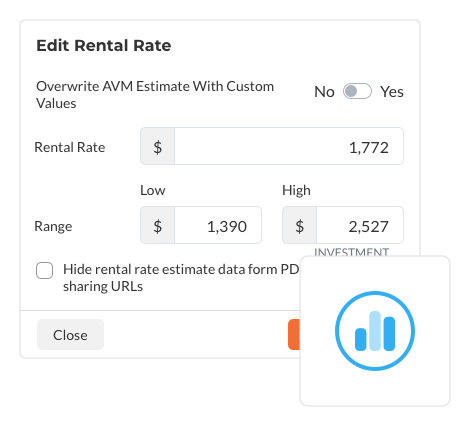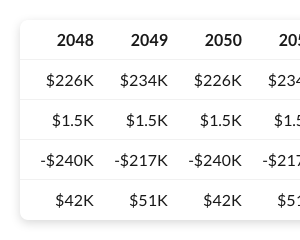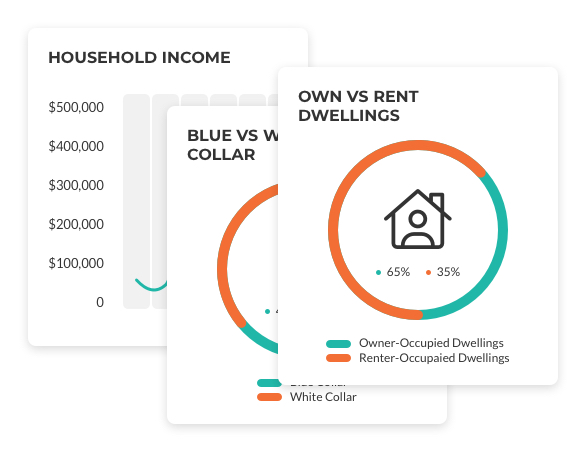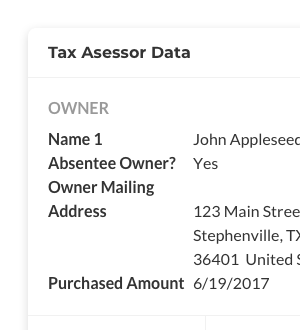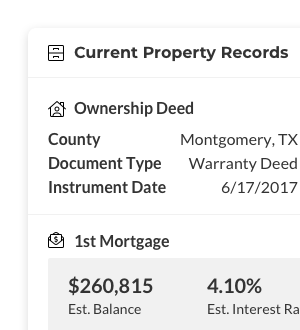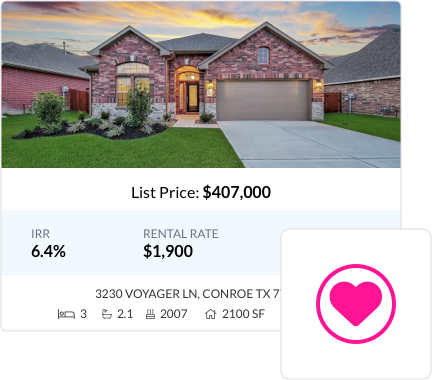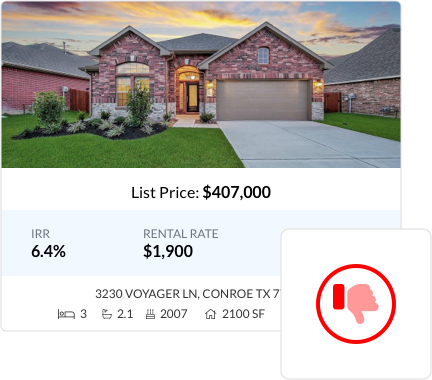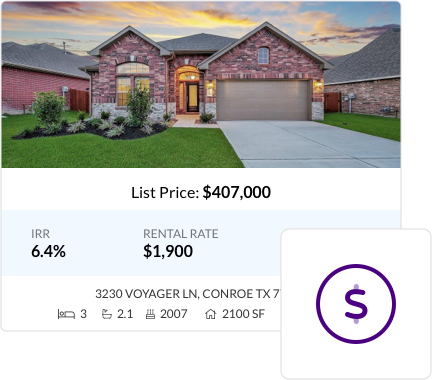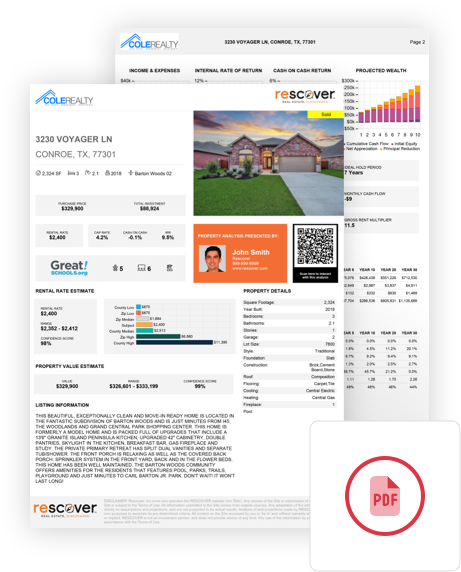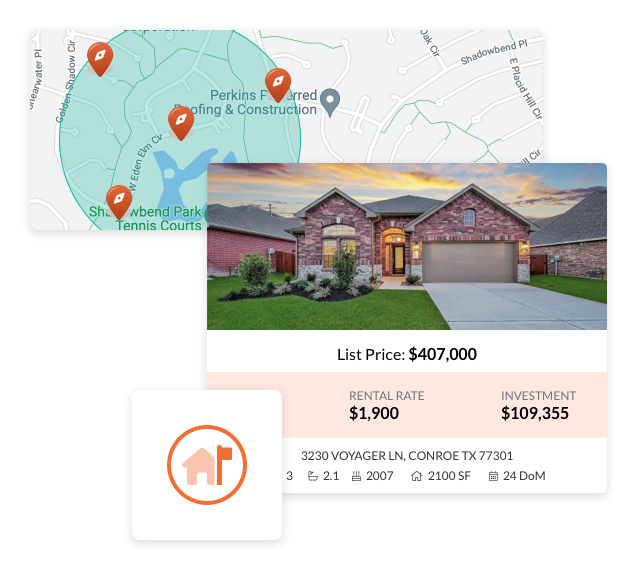
416 BELVIDERE MTN RD
0.0%
-
Rental Rate$0
Purchase PriceCash on Cash (CoC) Return is the amount of cash flow you receive in one year compared to the amount of cash invested.
Your Cash on Cash gauge reflects a goal of . You can adjust your CoC goal in Settings - Blue Chip Criteria.
The formula for Cash on Cash Return is:
Using the value from the analysis on this page, the CoC Return is calculated as follows:
Continue to learn more!:
Rescover Investment Term Library
-
Initial InvestmentInitial Investment is the total amount of money you put in upfront to purchase and prepare the property—like your down payment, closing costs, and any immediate repairs or improvements. This figure helps you see how much of your own cash is tied up before rental income (or other revenue) starts coming in.
The initial investment for the property on this page is summarized in the table below:
Calculating
| Purchase Price | |
| Plus: Title Charges | |
| Plus: Rehab Expense | $0 |
| Total Cost | $0 |
|---|---|
| Less: Loan Amount | () |
| Plus: Loan Fees | |
| Plus: Working Capital | $0 |
| Initial Investment | - |
Automated Valuation Modeling (AVM) uses machine learning algorithms to predict the rental rate for the subject property. These values are updated as often as monthly, based on closed transactions of similar properties in the area. Adjustments to the rental rate in the Rescover calculator will not affect the figures displayed on this card.
Calculating
Annual Cash Flow
This chart shows how much profit or loss you generate each year after paying all property expenses, including mortgage. It helps you visualize whether or not the property is self-sustaining and the inflection point for when it is expected to become cash flow positive.
Return on Investment
This graph compares two ways to measure your annual return:
- Cash on Cash: How much income you earn relative to your original cash invested (down payment, closing costs, etc.).
- Return on Equity: How much income you earn based on your current equity (the portion of the property you actually own).
Watching both lines helps you decide if it's time to sell, refinance, or keep building equity.
- Cash on Cash
- Return on Equity

Create an account
to view KPIs!
Calculating
| Purchase Price | |
| Plus: Title Charges | |
| Plus: Rehab Expense | $0 |
| Total Cost | $0 |
|---|---|
| Less: Loan Amount | () |
| Plus: Loan Fees | |
| Plus: Working Capital | $0 |
| Initial Investment | - |
Calculating
| Mortgage Payment (P&I) | |
| Property Tax | |
| Property Insurance | |
| Total Monthly Costs |
|---|
Calculating
| INCOME | |
|---|---|
| Potential Rental Income | |
| Vacancy Loss | |
| Effective Income | |
| OPERATING EXPENSES | |
| Property Tax | |
| Property Insurance | |
| HOA | |
| Property Management | |
| Leasing Commissions | |
| Property Maintenance | |
| Utility Expenses | |
| Other Expenses | |
| Total Expenses | |
| Net Operating Income | |
| NON OPERATING EXPENSES | |
| Monthly Debt Service | |
| Capital Expenditures | |
| Total Non Operating Expenses | |
| Total Cash Flow | |
Calculating
| Property Value The property value displayed in this table shows the expected appreciation you will realize over the next 30 years. |
|---|
| Rental Rate The rental rate displayed in this table shows the expected future rental rates you will achieve over the next 30 years. |
| Monthly Cash Flow Monthly cash flow is the average amount expected to receive each month after operating expenses and debt service are paid. |
| Gross Wealth Accumulation Gross Wealth Accumulation is the amount you would expect to receive at the end of each year, including cumulative cash flow, and the gross proceeds at the sale of the home. |
| Net Gain on Investment Net Gain on Investment is the total profit (or loss) you see after accounting for every dollar spent—like the purchase price, repairs, and other costs—and every dollar earned from rental income or a future sale. Essentially, it answers, "How much did I actually make from this property when all’s said and done?" |
Calculating
| Effective Income |
|---|
| Operating Expenses |
| Net Operating Income |
| Non Operating Expenses |
| Annual Cash Flow |
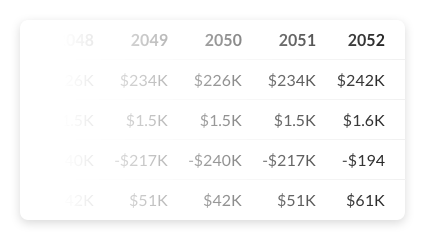
View our full 30 year analysis
with an account!
Calculating
| Property Value |
|---|
| Loan Balance |
| Cost of Sale |
| Net Equity (End of Year) |
 School Information
School Information

View detailed school information
with an account!
Learn more about school information
Offcanvas with body scrolling
